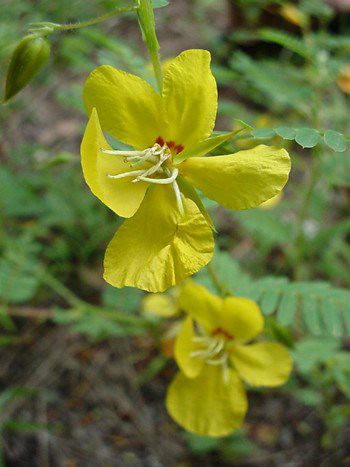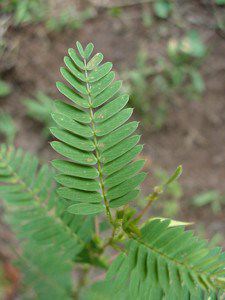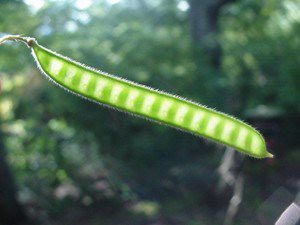|
 By the end of August, many early fall wildflowers are beginning to appear at Hilton Pond Center. Virtually all of them are found in open spaces such as meadows and edges of less-shaded trails where there is abundant sunshine; the tree canopy in a late-summer woods provides far too much competition for most herbaceous flowering plants. By the end of August, many early fall wildflowers are beginning to appear at Hilton Pond Center. Virtually all of them are found in open spaces such as meadows and edges of less-shaded trails where there is abundant sunshine; the tree canopy in a late-summer woods provides far too much competition for most herbaceous flowering plants.
One of the most reliable fall bloomers across much of the eastern U.S. is Partridge Pea, Cassia fasciculata, whose common name is derived from the fact that it is in the Pea Family (Fabaceae, formerly Leguminosae) AND the seeds are eaten by Bobwhite quail (alias "partridges"). The closely related Wild Sensitive Plant (C. nictitans) occurs in similar habitats and is pictured above; its name comes from the leaf's tendency to react to touch.
 These two plants have all the characteristics typical of the Pea Family: flowers with five petals, compound leaves, and seeds borne in pods. In both, the bright yellow flowers are seemingly asymmetrical, with broad petals and droopy stamens that bear the pollen; in Partridge Pea, there are ten stamens (four yellow, and six purple), while Wild Sensitive Plant has only five, all of which are white (see above). The leaf in both species has numerous pairs of tiny oval leaflets, each tipped with an even tinier terminal bristle. Either plant grows rather rapidly and begins flowering when less than a foot tall; by the time fresh flowers are being produced at the top of the plant, older flowers nearer the ground already have begin to produce seed pods. These two plants have all the characteristics typical of the Pea Family: flowers with five petals, compound leaves, and seeds borne in pods. In both, the bright yellow flowers are seemingly asymmetrical, with broad petals and droopy stamens that bear the pollen; in Partridge Pea, there are ten stamens (four yellow, and six purple), while Wild Sensitive Plant has only five, all of which are white (see above). The leaf in both species has numerous pairs of tiny oval leaflets, each tipped with an even tinier terminal bristle. Either plant grows rather rapidly and begins flowering when less than a foot tall; by the time fresh flowers are being produced at the top of the plant, older flowers nearer the ground already have begin to produce seed pods.
 The pod (left) is fuzzy and green at first, and translucent enough so that with backlighting the developing seeds are visible. As the little peas grow and mature, their pod dries, turns brown and eventually pops open, sometimes propelling seeds several inches away from the parent plant--which may explain how it is that Partridge Pea and Wild Sensitive Plant are almost always found in dense colonies. Although both plants grow best in sandy, well-drained soil, they are far from uncommon in the moist red clay of the Carolina Piedmont. The pod (left) is fuzzy and green at first, and translucent enough so that with backlighting the developing seeds are visible. As the little peas grow and mature, their pod dries, turns brown and eventually pops open, sometimes propelling seeds several inches away from the parent plant--which may explain how it is that Partridge Pea and Wild Sensitive Plant are almost always found in dense colonies. Although both plants grow best in sandy, well-drained soil, they are far from uncommon in the moist red clay of the Carolina Piedmont.
All photos © Hilton Pond Center
|

 By the end of August, many early fall wildflowers are beginning to appear at Hilton Pond Center. Virtually all of them are found in open spaces such as meadows and edges of less-shaded trails where there is abundant sunshine; the tree canopy in a late-summer woods provides far too much competition for most herbaceous flowering plants.
By the end of August, many early fall wildflowers are beginning to appear at Hilton Pond Center. Virtually all of them are found in open spaces such as meadows and edges of less-shaded trails where there is abundant sunshine; the tree canopy in a late-summer woods provides far too much competition for most herbaceous flowering plants. These two plants have all the characteristics typical of the Pea Family: flowers with five petals, compound leaves, and seeds borne in pods. In both, the bright yellow flowers are seemingly asymmetrical, with broad petals and droopy stamens that bear the pollen; in Partridge Pea, there are ten stamens (four yellow, and six purple), while Wild Sensitive Plant has only five, all of which are white (see above). The leaf in both species has numerous pairs of tiny oval leaflets, each tipped with an even tinier terminal bristle. Either plant grows rather rapidly and begins flowering when less than a foot tall; by the time fresh flowers are being produced at the top of the plant, older flowers nearer the ground already have begin to produce seed pods.
These two plants have all the characteristics typical of the Pea Family: flowers with five petals, compound leaves, and seeds borne in pods. In both, the bright yellow flowers are seemingly asymmetrical, with broad petals and droopy stamens that bear the pollen; in Partridge Pea, there are ten stamens (four yellow, and six purple), while Wild Sensitive Plant has only five, all of which are white (see above). The leaf in both species has numerous pairs of tiny oval leaflets, each tipped with an even tinier terminal bristle. Either plant grows rather rapidly and begins flowering when less than a foot tall; by the time fresh flowers are being produced at the top of the plant, older flowers nearer the ground already have begin to produce seed pods. The pod (left) is fuzzy and green at first, and translucent enough so that with backlighting the developing seeds are visible. As the little peas grow and mature, their pod dries, turns brown and eventually pops open, sometimes propelling seeds several inches away from the parent plant--which may explain how it is that Partridge Pea and Wild Sensitive Plant are almost always found in dense colonies. Although both plants grow best in sandy, well-drained soil, they are far from uncommon in the moist red clay of the Carolina Piedmont.
The pod (left) is fuzzy and green at first, and translucent enough so that with backlighting the developing seeds are visible. As the little peas grow and mature, their pod dries, turns brown and eventually pops open, sometimes propelling seeds several inches away from the parent plant--which may explain how it is that Partridge Pea and Wild Sensitive Plant are almost always found in dense colonies. Although both plants grow best in sandy, well-drained soil, they are far from uncommon in the moist red clay of the Carolina Piedmont.